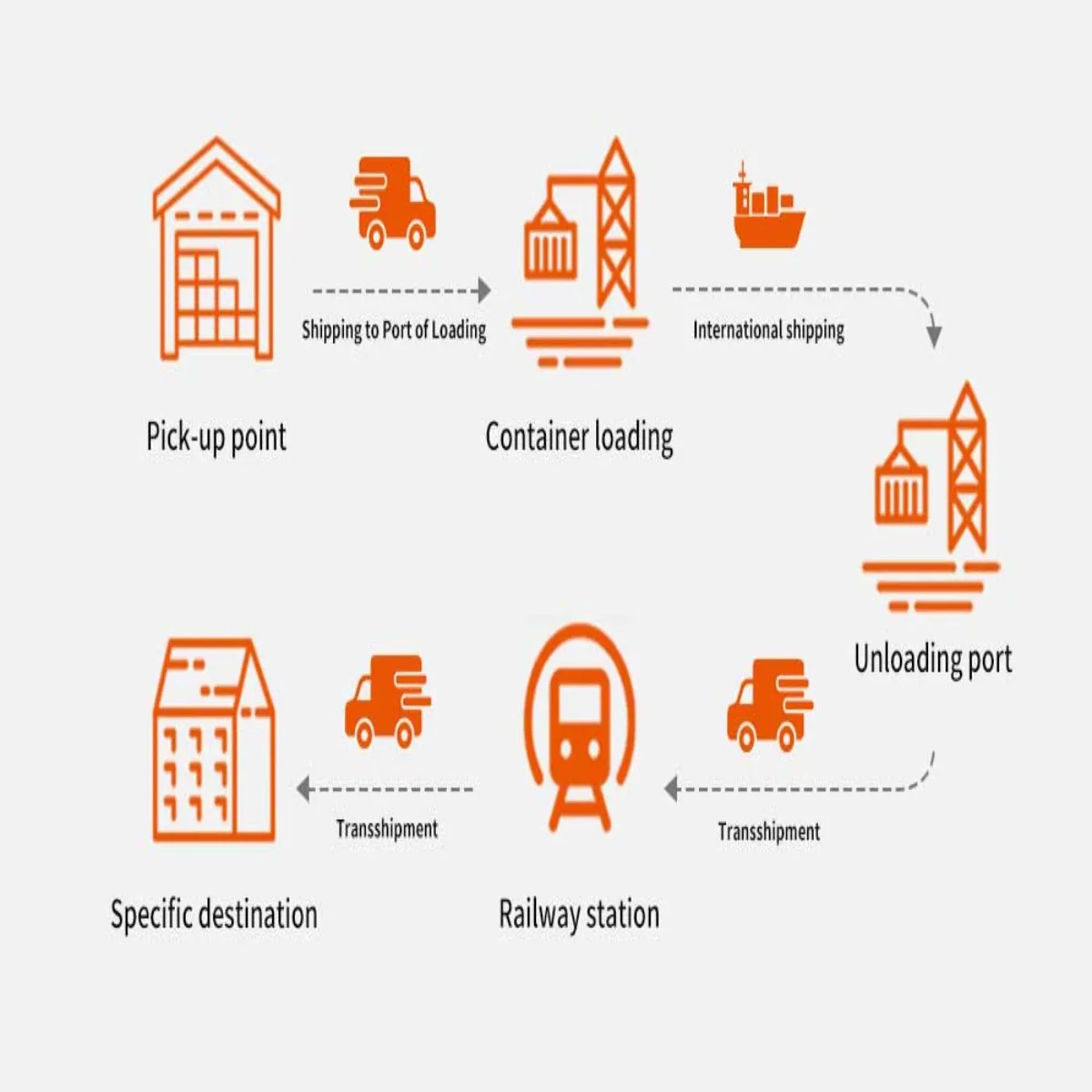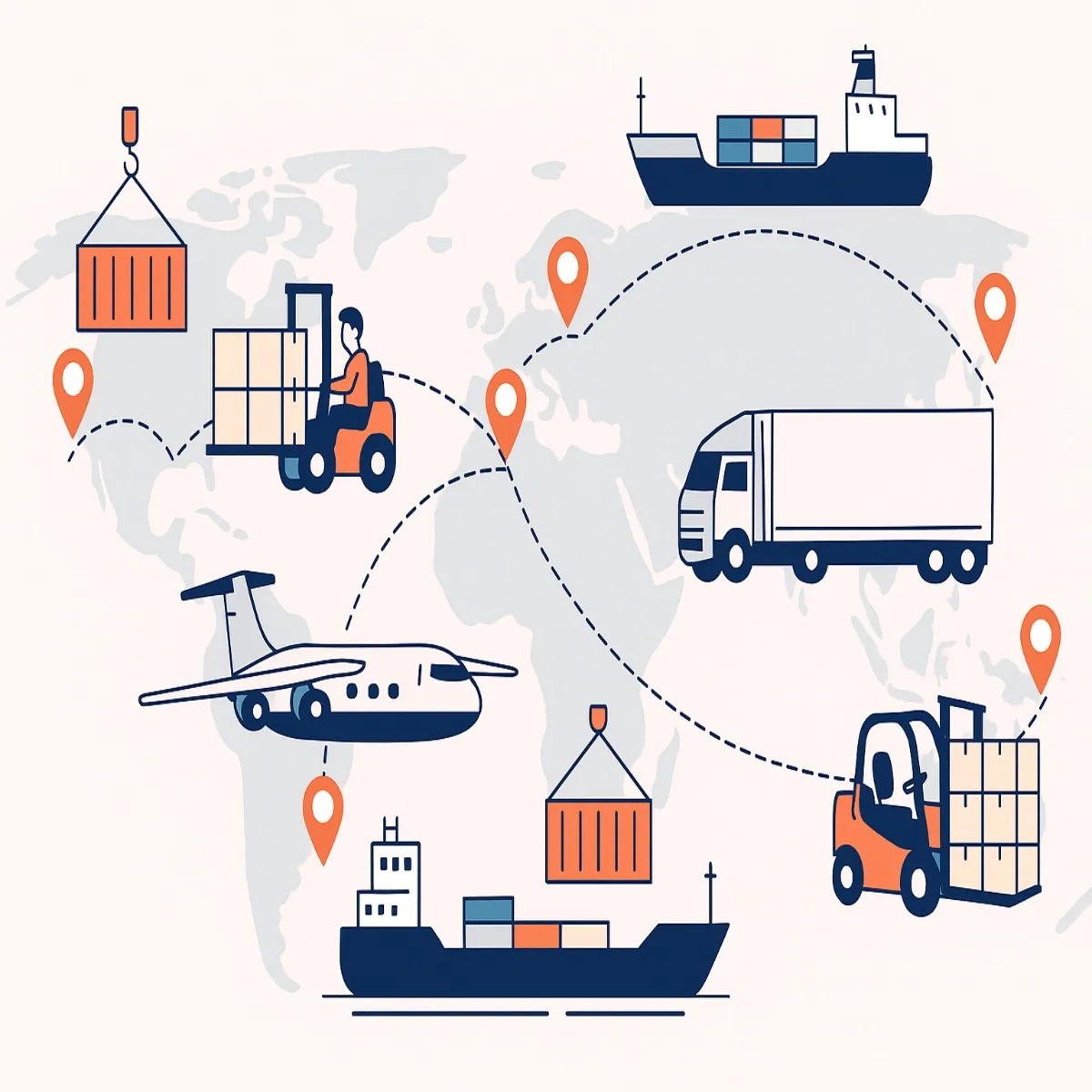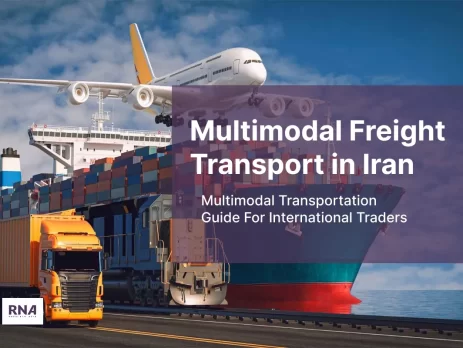In today’s fast-moving global trade, efficiency and reliability are critical. For traders from CIS countries, India, China, Turkey, the UAE, and beyond, Iran plays an important role as a gateway between East and West. One of the best methods to move goods in this area is through multimodal freight transport in Iran.
This system combines sea, air, and land transport to create a smooth supply chain. Iran has a very important location between the Persian Gulf, Central Asia, and Europe. Multimodal transportation in Iran gives international traders flexibility, speed, and reduce freight costs.
In this article, we explore how multimodal freight works, why Iran is an ideal hub, and how companies like Rasta Nik Asia support global businesses in moving their goods with confidence.
 Successful multimodal freight transport in Iran relies on smooth coordination at every stage of the supply chain. When sea, rail, and road work together under one contract, traders benefit from efficiency and reliability.
Multimodal transportation process can be summarized in four key steps:
Successful multimodal freight transport in Iran relies on smooth coordination at every stage of the supply chain. When sea, rail, and road work together under one contract, traders benefit from efficiency and reliability.
Multimodal transportation process can be summarized in four key steps:
 At Rasta Nik Asia, we specialize in connecting traders with safe, efficient, and transparent logistics solutions. Our services in multimodal transportation in Iran include:
At Rasta Nik Asia, we specialize in connecting traders with safe, efficient, and transparent logistics solutions. Our services in multimodal transportation in Iran include:
What is multimodal freight transport in Iran?
multimodal freight transport in Iran means moving goods using at least two different transport modes, such as sea and rail or air and road, under a single contract. This differs from intermodal transport, where each leg of the journey has a separate contract Benefits of multimodal freight transport in Iran include:- Time savings: Smooth transitions between transport modes reduce delays.
- Cost efficiency: Combining sea and rail often lowers costs compared to air freight alone.
- Flexibility: Traders can adjust routes depending on cargo type and urgency.
- Simplified paperwork : One contract and one operator reduce administrative work.
Why Iran is a Strategic Hub for Multimodal Transportation
Iran’s geography makes it one of the most important trade corridors in Eurasia. Key Advantages of Iran’s Position are:- Persian Gulf access: Major southern ports like Bandar Abbas connect traders to Asia and Africa.
- Proximity to CIS markets: Goods can move quickly to Kazakhstan, Uzbekistan, and Turkmenistan.
- Land routes to Europe: Road and rail corridors link Iran to Turkey and beyond.
- Air connections: Major airports in Tehran, Mashhad, and Shiraz serve as regional hubs.
Modes of Transport Combined in Iran
1. Sea and Land freight in Iran
Many shipments reach southern ports by sea. They then travel by road or rail across Iran to CIS countries. This method works well for bulk goods such as grains, animal feed, and construction materials. Example: A shipment from India to Kazakhstan can enter through Bandar Abbas and reach Almaty via Iran’s rail network in just a few days.2. Air and Road freight in Iran
When traders need faster delivery and want to save costs, goods arrive at Tehran International Airport and then travel by truck to nearby destinations. Example: Electronics from China can be flown into Iran, then delivered quickly to Turkey or Azerbaijan by road.3. Sea and Air freight in Iran
In special cases, goods arrive by ship to Iran, then transfer to air transport for faster regional distribution. This mix balances cost and speed for high-value cargo.How Multimodal freight transport in Iran Works Step by Step
 Successful multimodal freight transport in Iran relies on smooth coordination at every stage of the supply chain. When sea, rail, and road work together under one contract, traders benefit from efficiency and reliability.
Multimodal transportation process can be summarized in four key steps:
Successful multimodal freight transport in Iran relies on smooth coordination at every stage of the supply chain. When sea, rail, and road work together under one contract, traders benefit from efficiency and reliability.
Multimodal transportation process can be summarized in four key steps:
- Collection and preparation: Cargo is picked up from the supplier and prepared for international shipment.
- Port operations: Containers are loaded at the port of origin and moved by sea to Iran.
- Transshipment and inland transport: Goods are unloaded and transferred by road or rail across Iran toward regional markets.
- Final delivery: Cargo reaches its specific destination with clear reporting and simplified documentation.
Benefits of multimodal freight transport in Iran for International Traders
For merchants and traders working in food, livestock, and industrial goods, multimodal freight transport in Iran has several advantages:- Reduced transit time: Shorter lead times help businesses meet market demand quickly.
- Lower logistics costs: Blending sea and rail or road is cheaper than air freight only.
- Access to landlocked markets: CIS countries without direct sea access benefit from Iran’s transport corridors.
- Reliable partners: Companies like Rasta Nik Asia provide clear communication, fast response, and real-time reporting.
Challenges of multimodal freight transport in Iran
Although the benefits are significant, traders should also consider some common challenges of multimodal freight transport in Iran. These include:- Customs and border regulations: Documentation errors or incomplete paperwork may lead to delays.
- Seasonal congestion: Peak trade periods or harvest seasons can cause longer waiting times at borders.
- Fuel price changes: Shifts in local fuel costs can affect overall transport expenses.
- Weather disruptions: Heavy snow in the north or high summer heat in the south can slow down road and rail transport.
- Infrastructure limits: In some regions, older road or rail networks may impact delivery speed.
How to Overcome multimodal transportation Challenges
Working with an experienced logistics partner is the best way to minimize multi modal transportation risks. Rasta Nik Asia supports traders by:- Offering alternative routing solutions when borders are congested.
- Providing accurate documentation and customs guidance to avoid errors.
- Delivering real-time updates and proactive communication during the journey.
- Leveraging strong local networks at ports, borders, and terminals for faster clearance.
Rasta Nik Asia’s Role in Multimodal Freight Transport
 At Rasta Nik Asia, we specialize in connecting traders with safe, efficient, and transparent logistics solutions. Our services in multimodal transportation in Iran include:
At Rasta Nik Asia, we specialize in connecting traders with safe, efficient, and transparent logistics solutions. Our services in multimodal transportation in Iran include:
- End-to-end planning for sea, air, and land routes.
- Close cooperation with Iranian border offices and regional partners.
- Transparent tracking and reporting throughout the journey.
- 24/7 availability and quick response to client needs.
Practical Tips for Traders Using Multimodal Transport in Iran
When planning multimodal freight transport in Iran, keep these points in mind:- Choose the right combination: For perishable goods, combining air and road freight is the best option. For bulk items, sea and rail freight are more effective.
- Plan around customs: Make sure your documents are complete to avoid delays at the border.
- Track seasonal demand: During harvest or peak trade seasons, book your routes early.
- Work with an experienced logistic partner: Local expertise makes a big difference in navigating regulations.

